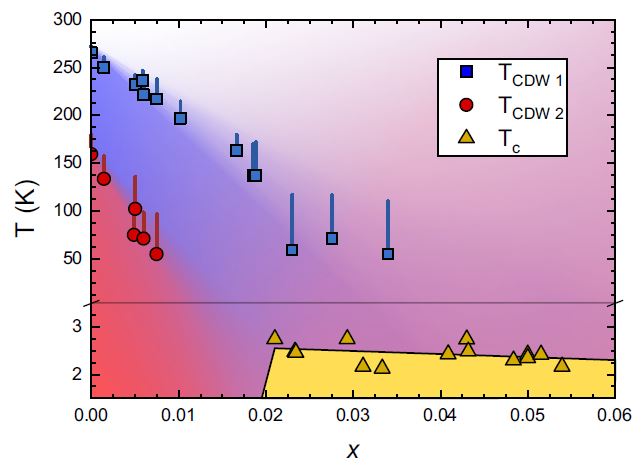|
|
|

It is generally accepted that magnetic interactions are important in cuprate and Fe-based superconductors. The parent phase in both materials is antiferromagnetic; magnetic resonances are observed via neutron
scattering in the superconducting state in both families; and the pairing symmetries in both families (including
the multiplicity of pairing symmetries in Fe-based superconductors) can be naturally understood in terms of
the dominant spin fluctuations. However, it is becoming increasingly apparent that charge ordered states
are also present in the phase diagrams of both families, raising broader questions about the inter-relation of
these other types of ordered states and their fluctuations with superconductivity. A large part of our research in the field of Fe-based superconductors is directed towards understanding the effects of nematic order and nematic fluctuations on the emergent superconductivity. A second area of study, more relevant to (motivated by) the cuprates than the Fe-based superconductors, relates to understanding the role(s) played by charge density wave (CDW) correlations and fluctuations in tetragonal materials, including effects due to the presence of disorder. Here we seek model systems to explore these effects in isolation from any incipient magnetic order. More broadly, there are many open questions simply regarding CDW formation in quasi-2D materials, including the relative importance of electron-phonon coupling and Fermi surface nesting, motivating a careful investigation of such systems.
Over the last few years we have shown that the rare earth (R) tri-tellurides RTe3 are just such model materials, hosting a unidirectional or, in some cases, bidirectional, incommensurate CDW. As such, they provide us with a unique opportunity to study the electronic structure of a pseudo-tetragonal material deep in such a state, to understand the driving force behind the instability, and indeed to explore how that state is perturbed by disorder.
The image shows recent results demonstrating the effect of Pd intercalation (x) on the phase diagram of ErTe3, which hosts two mutually transverse incommensurate CDWs. Background shading indicates
the magnitude of CDW correlations along the two in-plane axes:
blue signifies the primary CDW and red signifies the secondary.
As disorder increases, the material begins to exhibit short range
correlations along both directions (indicated by purple shading). True
long-range-ordered CDW phases exist only on the x = 0 axis. Strong enough disorder results in a superconducting (yellow) ground state.
|